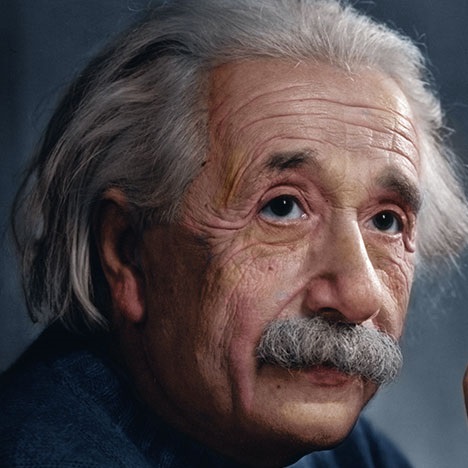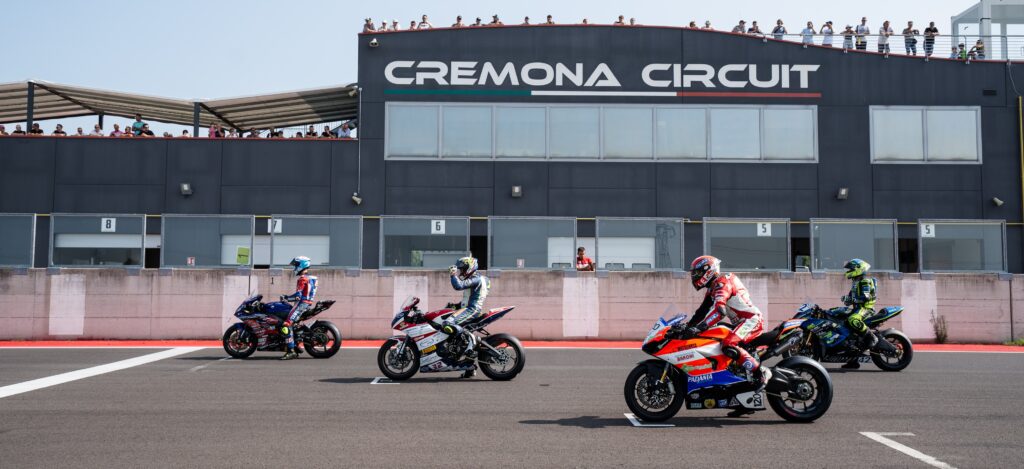LC is a strategy specifically thought for race starts. The aim is to obtain the maximum longitudinal acceleration while having the possibility to limit excess torque with proactive strategies.
To activate the LC startegy some conditions must be met. Furthermore the LC startegy has 3 different stages.
- Activation: Button press latch
- Stage A: First part of the acceleration, vehicle starts moving from zero speed
- Stage B: second part of the acceleration, vehicle is moving but clutch is not completely released
- Stage C: third part of the acceleration, clutch is completely released
ACTIVATION
To activate the system these requirements must be met (all, AND CONDITION):
- Engine must be running
- Vehicle speed must be lower than 5 km/h
- Gearbox in neutral or first gear
- Button (chosen by the user) has been pressed for the required amount of time (defined by the user).
The strategy may be reactivated if all conditions above are met and button has been released.
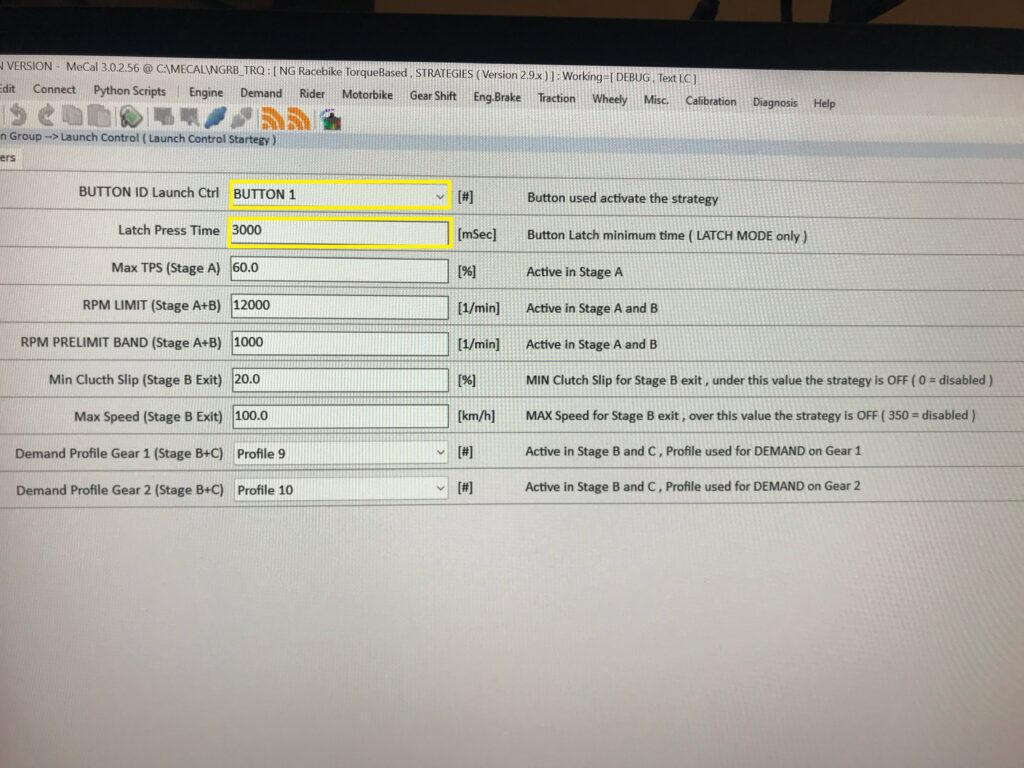
STAGE A
Once activated the strategy starts from Stage A
- Gas (hand throttle or grip) is set to 1:1 throttle (demand profiles not used)
- Limiter and prelimiter defined by the user (Limiter > 3000 RPM)
- Max Throttle limit defined by the user
To end Stage A and move on to Stage B at LEAST one of the conditions below must be true (OR condition)
- Longitudinal acceleration (X) must be more than 2m/s2
OR
- Gear > 1
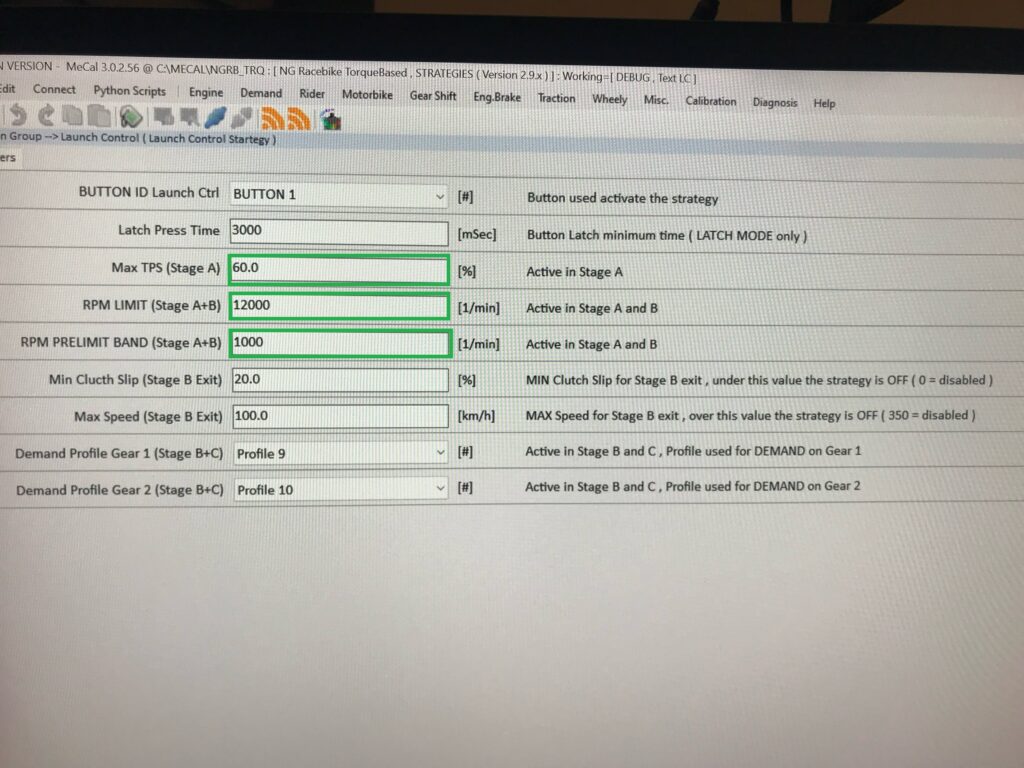
Please note that in LC startegies a much wider than usual prelimiter band is used.
STAGE B
- Limiter and prelimiter user defined (used also by Stage A)
- Demand profiles, defined by the user, for first and second gear.
To exit Stage B and pass on to Stage C
- Clutch slip defined by the user > 0% AND
- Clutch slip value must be > -5% AND
- Clutch slip value < Clutch slip defined by the user
OR
- Vehicle speed > Max Speed defined by the user
OR
- Gear > 1
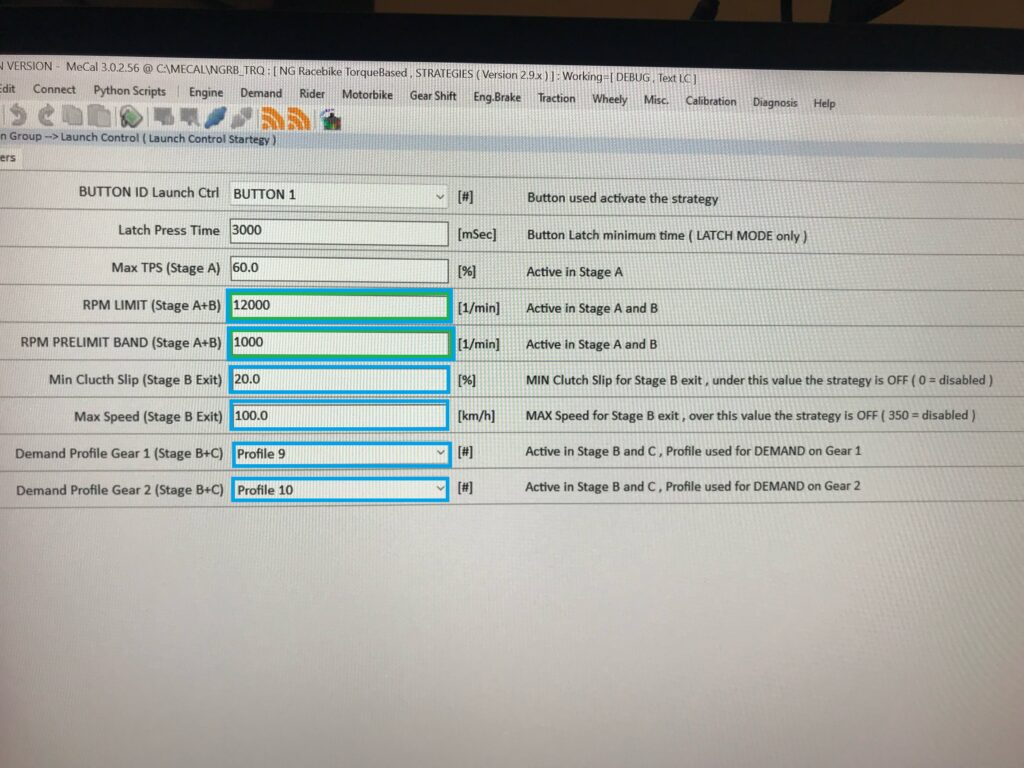
Stage C
- User defined demand profiles for first and second gear
To exit Stage C and end the strategy one of the following conditions must be met (OR condition):
- Gear > 2
OR
- GAS <10%
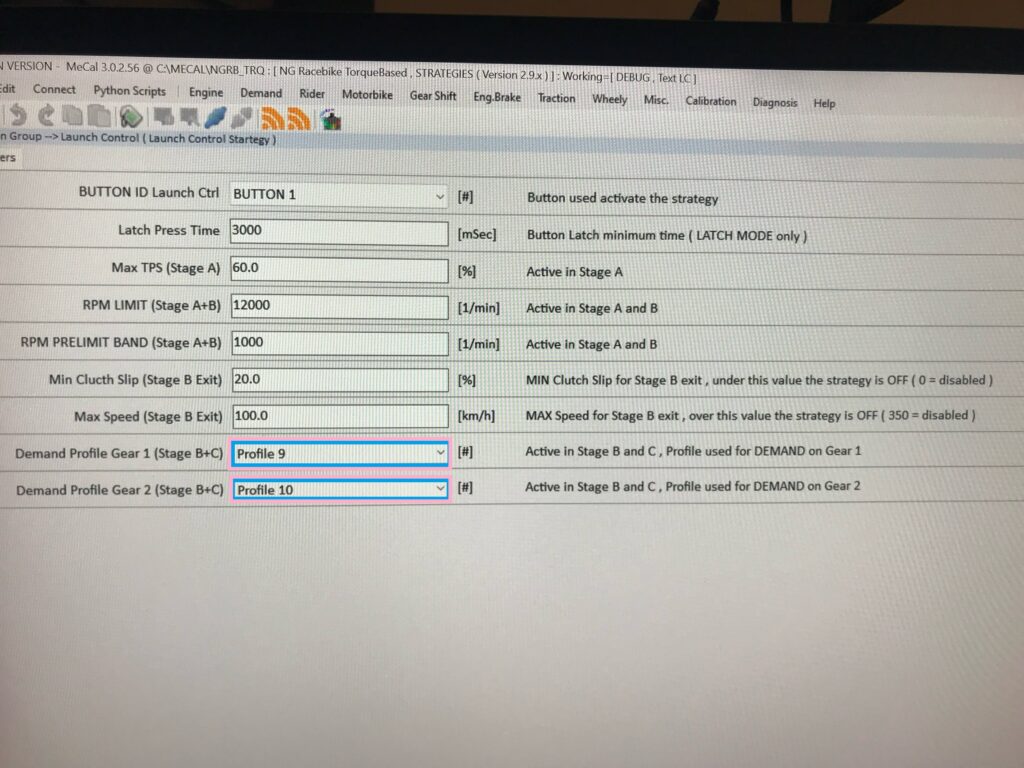
Please note that third gear will make the system exit the strategy in rapid succession, as a chain reaction, going from Stage A, passing through B and C and then deactivating the strategy.
To keep track of the strategy sequence during calibration the channel LC STATE can be used (channel is present in the CUSTOM protocol).
A proactive torque limit (in demand profiles) will help the AntiWheeling system to work smoothly and consistently, having to deal with less excess torque. If no reactive system is available then Antiwheeling must rely only on proactive strategies.
Please note:
- Clutch slip is a calculated channel, it uses vehicle speed, RPM, and total ratio (primary gear and final) to calculate clutch slip. If any of these parameters is not correct (usually total ratio by forgetting to update final ratio) Clutch slip will not be correct and all strategies linked will therefore not work as expected.
- How to calculate and create proactive torque limits using demand profiles is explained in our trainings.

